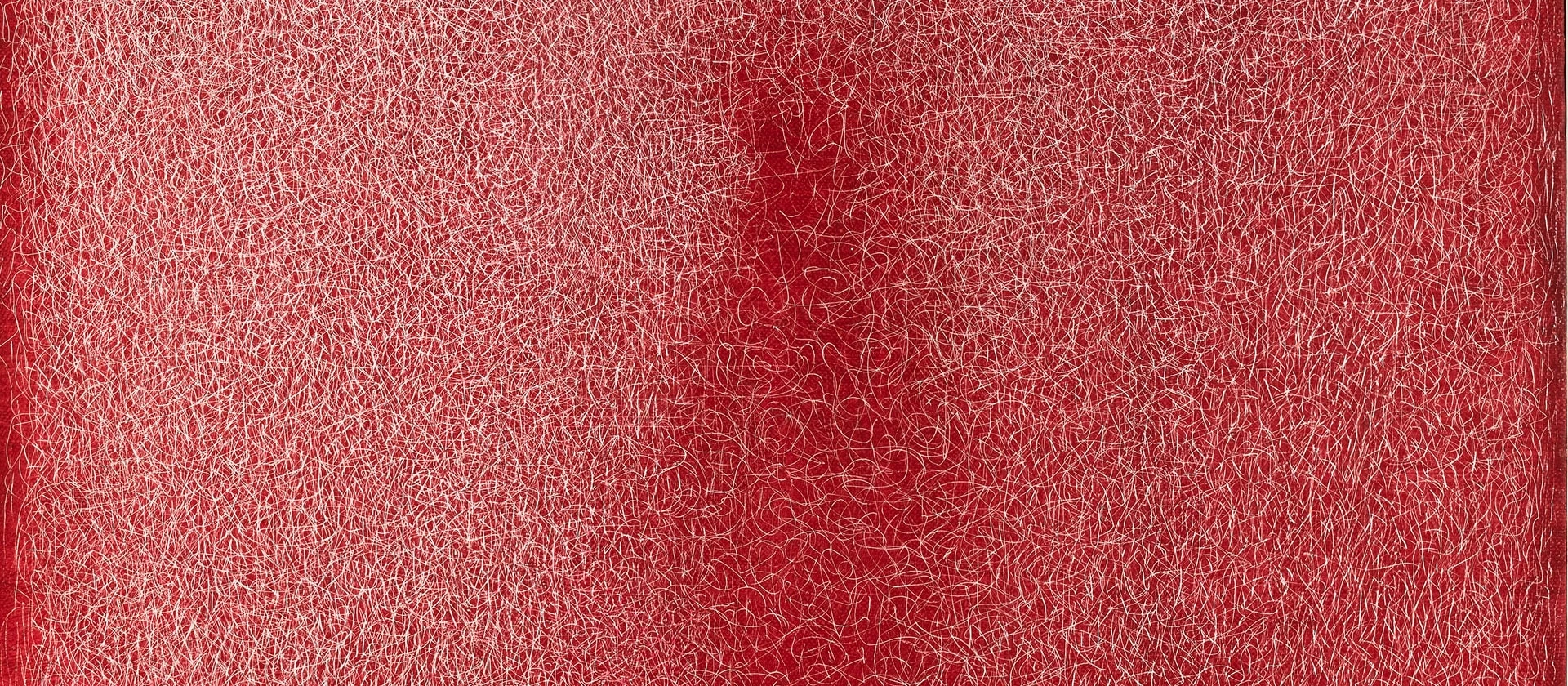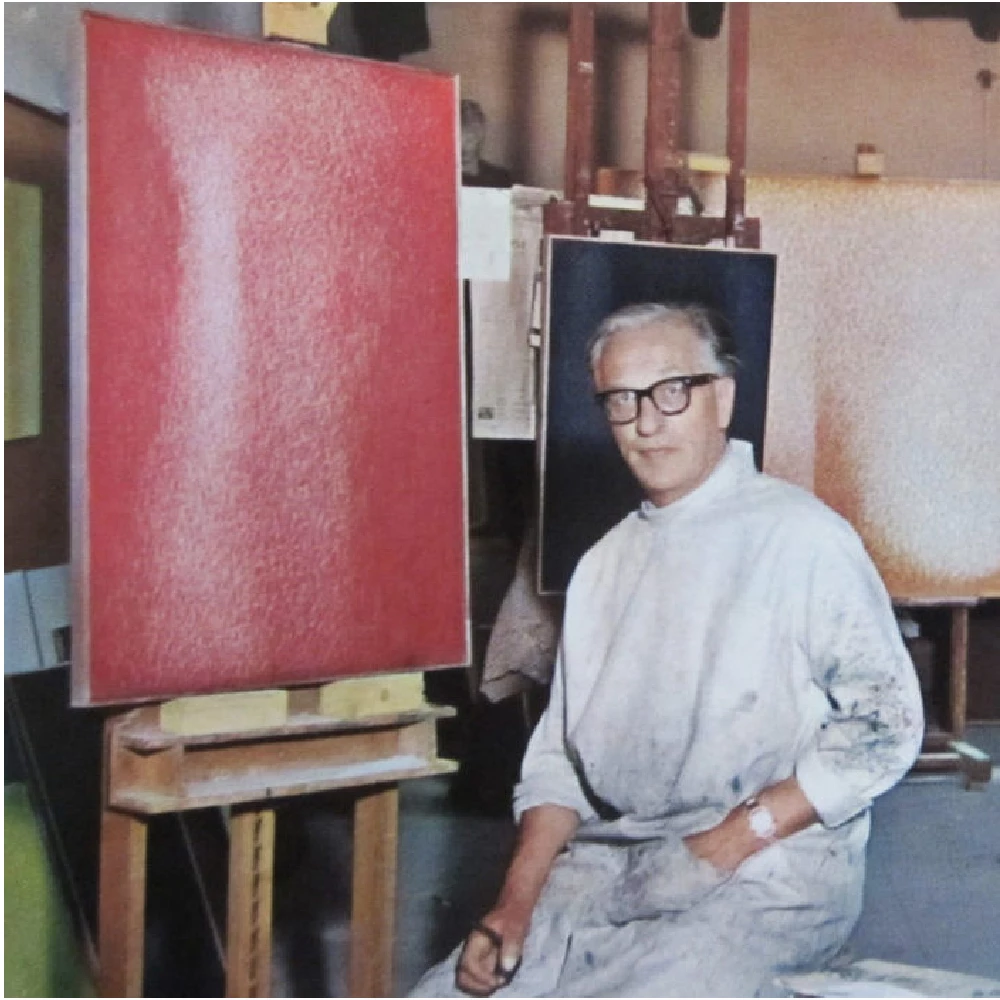Mario De Luigi (or, as he signed himself, Deluigi) was born in Treviso (Veneto, Italy) on June 21, 1901, from Eugenio Deluigi and Alceste Pasti. Together with his twin sister Maria, he is the last of eleven children. After graduating from the Liceo artistico privato Rinaldo Contardo in Venice in 1925, he enrolls into the city’s Academy of Fine Arts, where he attends the painting classes taught by Ettore Tito. The following year, De Luigi studies painting with Virgilio Guidi, a pivotal figure in the artist’s education. To this period dates the start of De Luigi’s friendship with Carlo Scarpa, a fellow student at the academy.
In 1926, De Luigi travels for the first time to Paris, where he returns in 1937 on the occasion of the World’s Fair. In 1928, he meets Gino Severini, who becomes a valued friend. In the same year, De Luigi exhibits his work for the first time at the XIX Collettiva dell’Opera Bevilacqua La Masa and, in 1930, participates to the Venice Biennale for the first time.
In the early 1930s, De Luigi starts collaborating with Scarpa on designing furniture, such as that for the home of Ferruccio Asta (1931), featured by Edoardo Persico in La Casa Bella.
With the help of Guidi, in 1933 the artist is included in the group show Cinque Pittori Veneti, held at the Galleria del Milione in Milan. He becomes interested in mosaic, a tecnique he would continue practicing for years (in 1932, in the Decorative Art section of the 18th Venice Biennale, he exhibits the mosaic Il bagno, designed and executed together with Scarpa in 1929).
Following his academic beginnings, De Luigi is fascinated by Guidi’s luminous painting and by the post-impressionist style of the Venice lagoon painters.
In around 1934, De Luigi researches a ‘modern’ language of painting. He is one of the few artists in Italy to become interested in Cubism and Synthetic Cubism, opening his horizon to international ideas. He develops a type of painting characterized by a simplification of forms, rendered through uniformly painted areas, as exemplified by the fresco La scuola (1936), executed for the Venice Ca’ Foscari University. Fascinated by the research of a plasticity of forms, during the 1930s, De Luigi experiments with sculpture, working as assistant to Arturo Martini at the Venice Academy of Fine Arts from 1942 to 1944. These are the years when De Luigi becomes acquainted with the Venetian cultural milieu, meeting the poets Ugo Fasolo, Carlo Betocchi, Diego Valeri, Giacomo Noventa, the musicians Bruno Maderna and Gian Francesco Malipiero, and the gallerist Carlo Cardazzo.
In the 1940s, De Luigi defines his paintings as “physiological”: in each object, he tries to detect the essence of a “physiological shape” that could be depicted following a pure perception of reality. Examples of this research are the monotypes that the artist exhibits in his first solo exhibition at the Galleria del Cavallino in Venice (where he would also exhibit in 1953, 1956, 1957, 1961 and 1973). Together with Carlo Scarpa and Anton Giulio Ambrosini, in 1946 De Luigi founds the Scuola Libera di Arti Plastiche and, in the same year, he begins teaching set design at the Venice Istituto Universitario di Architettura (IUAV), where he would remain until 1971. His proximity to themes linked to architectural design and, above all, his contact with the architect Bruno Zevi, allows De Luigi to define his personal concept of space, understood not as a dimension but as a temporal condition of artistic making. In 1946, he is awarded with the Premio Burano and, in 1947, the Premio Albano. In the same year, he has a solo show at the Galleria del Naviglio in Milan (where he would also exhibit in 1951, 1955, 1958, 1964 and 1972).
From the mid-1940s, De Luigi moves towards abstraction, progressively abandoning his ‘physiological’ painting and figuration, opening and dissolving the shapes in chromatic and luminous nuances. This new style is epitomized by the Amori (1948), the artist’s first spatial works. Indeed, in 1951 De Luigi signs the Manifesto dell’arte spaziale in Milan, followed by the Manifesto del movimento spaziale per la televisione (1952) and Lo spazialismo e la pittura italiana nel XX secolo (1953). He takes part in the exhibitions of the artists associated with Spatialism, the movement founded by Lucio Fontana and promoted by Carlo Cardazzo.
During these years, De Luigi continues his investigation on connections between space, light and colour, which would become the predominant theme in his oeuvre. Light is conceived as a structural device: it is not painted, yet it is built within the painting through scratching its surface directly. It is the grattage technique, which would characterize the whole of De Luigi’s subsequent output, and is epitomized by the works he presented at the 1954 Venice Biennale, the Motivi sui vuoti (Motifs on Voids).
In 1955, in collaboration with Anton Giulio Ambrosiani, De Luigi designs a large mosaic for the atrium of the train station Venezia Santa Lucia.
During the 1960s and 1970s, De Luigi continues his research on light, and is the protagonist of significant solo exhibitions, including the one organized at the Fondazione Querini Stampalia in 1966 and a retrospective in the Sala delle Cariatidi at the Milan Royal Palace in 1975. He takes part in international exhibitions including the Venice Biennale of 1930, 1932, 1948, 1950, 1952, 1954, 1962 (presented by Carlo Cardazzo, with a solo exhibition room designed by Carlo Scarpa), 1968 (presented by Guido Ballo, with a solo exhibition room designed by Carlo Scarpa) and in the Rome Quadriennale of 1959 and 1972.
In 1980, the Venice Biennale stages a retrospective of De Luigi’s work in the Church of St Stae, followed by those organized at the Galleria d’Arte Moderna Ca’ Pesaro in 1991 and at the Palazzo Regazzoni-Flangini-Biglia in Sacile in 1997.
Works by the artist can be found in the collection of the Museo Revoltella (Trieste), MART (Rovereto), Ca’ Pesaro – Galleria Internazionale d’Arte Moderna (Venice), Museo del Novecento (Milano), The Vatican Museums – Collection of Modern and Contemporary Art (Vatican City), Fondazione Biscozzi Rimbaud (Lecce).

